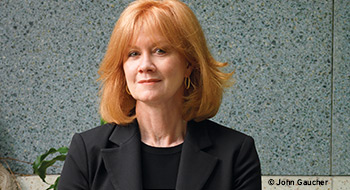

You could say the University of Calgary has graduated with honours for its approach to work-life balance.
The university has been recognized for its work-life balance programs: it’s the first Canadian employer to receive the WorldatWork Alliance for Work-Life Progress Seal of Distinction. “The best way an employer can help employees navigate both home and work challenges will be to develop programs and initiatives that help address those dual impacts on the employee,” says Marcia Buchholz, the university’s associate vice-president of HR.
The University of Calgary’s employee population is aging, but it’s also attracting a much younger demographic. The challenge, says Buchholz, is retaining these employees. “Calgary has an active job market, and employees with transferable skills are often seduced by energy sector jobs when the market is hot.”
Read: The return on investment of EFAPs
One of the university’s most successful work-life balance initiatives is its employee and family assistance program. While the 49-year-old institution has always had an EFAP in one form or another, having it on-site brought concerns over privacy, says Buchholz.
Through programs and counselling, an EFAP can help employees with any number of issues — mental health, family-related and work-related — which can affect an employee at work. “When you consider the changing demographic and the competitive landscape in attracting top talent, organizations need to really encompass all aspects of the employee’s life, not just the workplace,” Buchholz adds.
Moving off-campus
As part of its vendor restructuring three years ago, the university moved to Ceridian’s LifeWorks EFAP — a 24-7 short-term counselling model for employees and their families.
LifeWorks operates through a 1-800 number. With LifeWorks EFAP, calls are triaged to ensure the employee is not a danger to herself or others, says Buchholz. The counsellor will then ask for more details and connect the employee with the appropriate local resource or service.
A short-term counselling model typically consists of four or five sessions, which is usually enough to get the employee back on track, notes Buchholz. Longer-term counselling can be arranged; however, those extra sessions aren’t covered under the EFAP benefit.
Read: More young Canadians accessing EFAPs online
With the former on-site EFAP model, employees were concerned about being seen on campus accessing EFAP services. There is more privacy and confidentiality for employees who access a 1-800 number, as well as improved overall reporting on the types of services employees access, says Buchholz.
She adds that the old on-site model has been popular with many post secondary institutions in the past, since these institutions tend to have a different philosophy. “They would have some kind of model on-site for the students, and they would mirror what they do for the students, for the employees.” However, she says, an on-site model isn’t a modern approach.
Resources ready
The LifeWorks website offers a library of resources. Last year, it had more than 2,300 unique visits by employees. Staff members can access an online smoking cessation program or nutritional counselling and arrange one-time financial and legal consultations, debt counselling and sleep coaching. They can also download resources or order CDs such as Being a New Dad or Breathe, a relaxation tool.
Since switching to LifeWorks in August 2012, the university’s EFAP usage has nearly doubled. From October 2013 to September 2014, the utilization rate increased to 15% from a mere 6% three years ago.
An EFAP can help employees avoid the needed time off work to deal with personal issues. “Developing appropriate supports, such as the services that an EFAP can provide, helps staff deal with all of life’s challenges and helps them to be more productive at work and more engaged,” Buccholz notes.
Read: Case study: City of Calgary helps staff sleep
The university introduces the program to new employees at orientation sessions. There are also a number of other communications once an employee has joined the institution, such as a monthly wellness e-newsletter and lunch-andlearns (in 2014, there were 26 sessions). And the university has a health promotions advisor, who talks about various EFAP services at faculty or department meetings by request (in 2014, there were 36 EFAP overview presentations).
“The EFAP can offer all kinds of different services, but if your employees don’t know about them, then it’s all for naught,” Buccholz adds.
For the initial rollout back in 2012, the university focused more on day-today issues, such as finding child care or financial help. But in 2014, per the university’s aggregated statistics, the top reasons employees accessed counselling services were related to stress, anxiety and depression.
“When you look at the younger generation, they’re presenting with very high numbers of depression and anxiety—and they’re supposed to be the next wave of our workforce,” says Buccholz.
Here’s the good news: employees who’ve already accessed the EFAP are more likely to use it again. “In the event of a more serious issue — such as depression, death or addictions — those employees [who are already using the program] are more likely to feel comfortable reaching out for help,” she adds. “And the stigma becomes less of an issue.”
Read: How employers can address mental-health issues
Buccholz believes work-life balance is a key factor in attracting and retaining the best employees. But while all generations want work-life balance, she says millennials will demand it.
“They want to do things differently, and we know just how much importance they place on having a life,” says Buccholz. “In many ways, they have their priorities straight. They want to have that balance.” And a well-communicated EFAP can help.
Brooke Smith is managing editor of Benefits Canada.
Get a PDF of this article.
